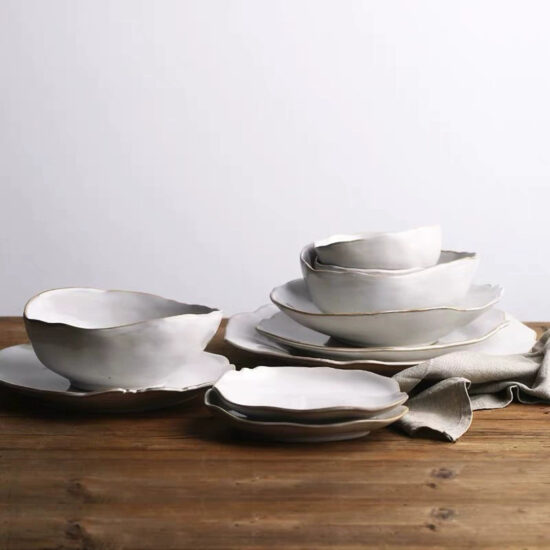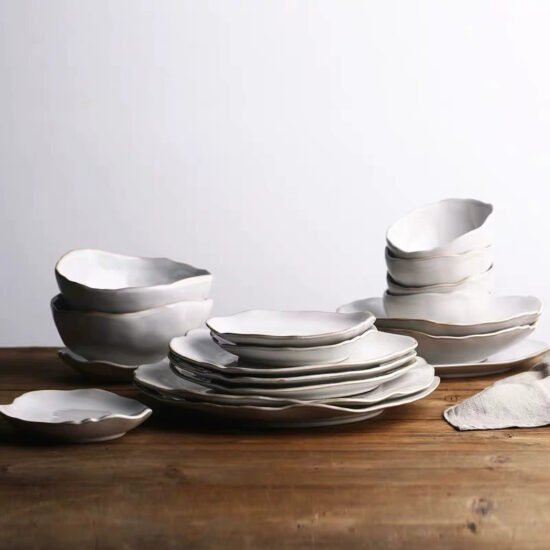bob@nbdho.com
Understanding the Heat Resistance of Ceramic Bowls: What You Need to Know
Understanding the Heat Resistance of Ceramic Bowls: What You Need to Know
Introduction
Ceramic bowls are known not just for their aesthetic appeal but also for their ability to withstand heat. But how heat-resistant are they really? Can all ceramic bowls be used in a microwave or oven? As a professional ceramic bowl manufacturer, we’ll explain the science behind heat resistance and what makes a ceramic bowl safe for high-temperature environments.
1. What Does “Heat-Resistant” Mean for Ceramics?
In ceramics, heat resistance refers to the material’s ability to tolerate high temperatures without cracking, breaking, or deforming. This is especially important for:
-
Microwave use
-
Oven baking
-
Dishwasher cycles
-
Hot food or liquids
Ceramic bowls made with high-quality materials and fired at the correct temperatures can withstand everyday thermal stress with ease.
2. Key Factors That Affect Heat Resistance
🔹 Material Composition
Different types of ceramic (stoneware, porcelain, earthenware) have varying thermal properties.
-
Porcelain: Fine-grained, high-fired ceramic—excellent heat resistance.
-
Stoneware: Durable and often thicker—great for baking and hot foods.
-
Earthenware: More porous and lower-fired—not ideal for high heat.
🔹 Firing Temperature
The firing temperature during production impacts how vitrified (glass-like) the ceramic becomes.
-
High-fired ceramics (above 1200°C / 2190°F) have higher heat tolerance.
-
Low-fired ceramics are more fragile and heat-sensitive.
🔹 Glaze Quality
A properly applied, lead-free glaze protects the bowl from thermal shock and makes it food-safe and more durable.
🔹 Wall Thickness
Thicker walls help distribute heat more evenly and resist thermal shock better.
3. Can Ceramic Bowls Be Used in the Microwave?
✅ Yes — if they are labeled as microwave-safe.
Most modern ceramic bowls can be used in the microwave, especially stoneware and porcelain types. However:
-
Avoid ceramics with metallic rims or decorative gold/silver glazes.
-
Always check for manufacturer labeling.
-
Don’t microwave cold ceramic straight from the fridge—it can crack due to thermal shock.
4. Are Ceramic Bowls Oven-Safe?
✅ Yes — for oven-safe varieties.
Many ceramic bowls are designed to handle oven temperatures up to 500°F (260°C). Key guidelines:
-
Always preheat the oven with the ceramic bowl inside to avoid sudden temperature shifts.
-
Never place cold ceramic directly into a hot oven.
-
Avoid direct flame or stovetop heat (unless labeled flameproof).
5. What Is Thermal Shock and How to Prevent It?
Thermal shock occurs when a ceramic bowl is subjected to sudden temperature changes, causing it to crack. To avoid this:
-
Let frozen or refrigerated ceramic bowls warm to room temperature before heating.
-
Never pour boiling liquid into a cold bowl.
-
Use gradual heating and cooling methods.
6. Quality Standards You Should Look For
When sourcing ceramic bowls, especially in bulk, always verify:
-
✅ Microwave & oven-safe certifications
-
✅ Lead & cadmium-free glaze
-
✅ Firing temperature (ideally ≥1200°C)
-
✅ Manufacturer testing reports (drop test, heat test)
As a trusted ceramic bowl supplier and OEM/ODM factory, we rigorously test our products for thermal durability, ensuring safe use in both domestic and commercial kitchens.
🧠 Conclusion: Choose Ceramic for Reliable Heat Performance
Ceramic bowls—especially stoneware and porcelain—offer outstanding heat resistance for both home and commercial use. Whether used in a microwave, oven, or hot dish presentation, they combine performance with elegance.
If you’re looking for heat-resistant, food-safe, and customizable ceramic bowls for wholesale or branding, we’re here to help. Contact us for factory pricing and customization options.

